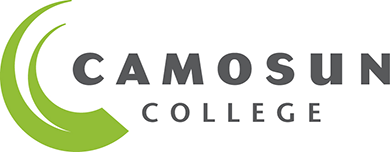CSEE works with international sport psychologist
Archived Content
This archived web page remains online for reference, research or record-keeping purposes. This page will not be altered or updated and may contain out of date information. If you’re looking for specific information and haven’t found it, please contact communications@camosun.ca.
Visiting professor highlights long reach of Canada’s newest sport education centre
April 9, 2010
Camosun’s Centre for Sport and Exercise Education is breaking down old-school ideas about fitness, active living and psychological health.

Dr. Jiri Kirchner
Take outdoor adventure activities, for example— mountaineering, sea kayaking, snowboarding, cycling, etc. Most of us don’t consider the therapeutic benefits of these activities. So, it’s a good thing that Czech Republic sport psychologist Dr. Jiri Kirchner is visiting the Centre for Sport and Exercise Education (CSEE) to share his expertise in the emerging fields of Environmental Fitness and Adventure Therapy.
Environmental Fitness... more than just playing around
People feel better after adventuring into the outdoors, and Kirchner’s research is unravelling the connections between fitness, outdoor adventure, and psychological well-being.
“Sport psychology links movement, psychology and healthy social relationships. Together, these can lead to mental wellness for individuals and for communities,” says Kirchner. With a PhD in sport psychology and undergraduate studies in music, Kirchner integrates research and advanced knowledge to develop therapeutic approaches to help people improve their mental and emotional wellness, physical condition, high-level sport performance, and quality of movement, especially when living with disabilities.
 Psychology plays three important roles for adventure sport enthusiasts, according to Kirchner. One is to improve performance for high-level athletes. Because elite athletes—the top 20% of competitors in any discipline—are on a par physically, the difference in competition-level performance comes down to having a clear mind and strong mental health.
Psychology plays three important roles for adventure sport enthusiasts, according to Kirchner. One is to improve performance for high-level athletes. Because elite athletes—the top 20% of competitors in any discipline—are on a par physically, the difference in competition-level performance comes down to having a clear mind and strong mental health.
Another benefit to rigorous outdoor activity is its role in improved emotional stability and anger management. The fitness and social interaction involved contributes to physical fitness, which in turn is good for mental health. Usually, these activities are affordable and practical, allowing all members of society to participate at a variety of levels.
Lastly, well-planned adventure sports contribute to healthy socializing. Activities like rope sports, orienteering and climbing rely on high levels of trust, interaction and organization and involve a bit of risk-taking, which all have positive benefits to participants.
What’s the Camosun Connection?
Dr. Peter Rehor, Dean of Camosun’s Centre for Sport and Exercise Education (CSEE) continues to look to international expertise and innovation to develop curriculum that leads to healthy communities. He invited Kirchner to visit Canada and act as a resource in developing an Environmental Fitness course for the Exercise and Wellness Diploma program.
Kirchner has spent the past seven years developing the bachelor's degree curriculum in outdoor/adventure education as a part of the teacher preparation program at the Jan Evangelista Purkyne University in the Czech Republic. He is currently on a six month paid sabbatical from his home institution, and he is exploring the similarities and differences of local, provincial and Canadian post-secondary education systems and functions.
“European post secondary institutions are very involved in teaching motor skills through scope and sequence based approach with a focus on mass participation,” says Rehor. “Dr. Kirchner has unique academic methods of teaching lifetime sports and curriculum theory. This is the first tangible connection with Kirchner’s university, and I look forward to more to come.”
Jiri Kirchner will reside in Victoria till May 5, continuing his work with the CSEE while collaborating with faculty members from the University of Victoria, Red Deer College in Alberta and the University of Fraser Valley.
Last updated: September 23, 2015 5:12 pm


